SAN JUAN CAPISTRANO (Day 14 - part 2)
The south wing continued with the pantry...

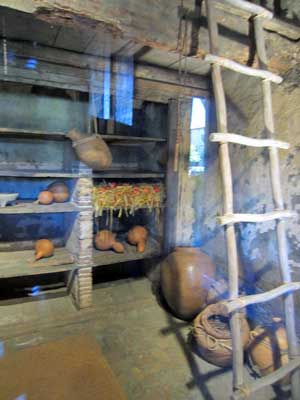
... and the kitchen...



For breakfast and dinner, the padres ate a barley or corn porridge. For lunch they had a stew with meat (such as pork) and garden vegetables. Their diet differed greatly from the locals who ate native plants and animals. Basically livestock (ranching) and crop production vs. hunting/fishing and gathering.


A cooking pot ... and some fake meat (which look like pig's feet!)


The west wing...

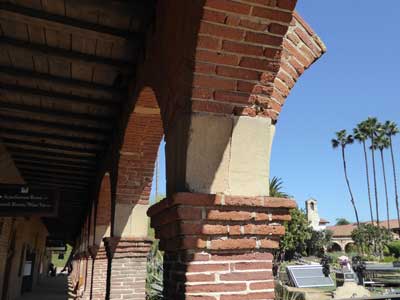

This small channel served as the mission's irrigation canal, providing water from the local creeks for drinking water and for watering the gardens.

More displays
The Acjachemen Room....


Long before the Spanish arrived, this land (Orange County) was home to the Acjachemen people who migrated here from up north some 10,000 years ago.
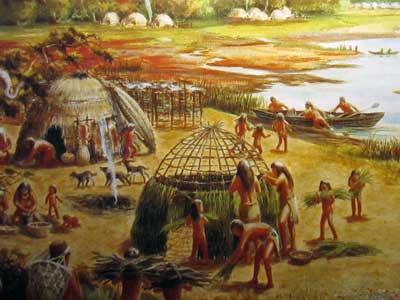

The Spanish Room...


The Spanish Colonial art period (1769 - 1821)
Although Alta California had been claimed by Spain since Juan Rodriquez Cabrillo's exploration in 1542, it wasn't until the 1760s that King Carlos III of Spain ordered its settlement due to Russians encroaching on the area. The mission system was believed to be the most cost-effective way to do this peacefully. It combined both the Church (priests) and state (military).
Over time, artwork was imported (mostly from Mexico) to decorate church interiors. The visual images helped attract new people to the church and also illustrate the stories and teachings.

Mary Magdalene, circa 1800s. It's believed to have been carved in Mexico along with eight other statues to be placed in the sanctuary niches of the Great Stone Church. The statues survived the earthquake because that was the only piece of the church that didn't collapse.

Our Lady of Sorrows, circa 1800s. The Blessed Virgin Mary has seven sorrowful events in her life which inspire devotional prayer in the Catholic faith. Paintings such as this were common in Spanish Colonial art. It was conserved in 2015.


Saint Veronica wipes the face of Jesus, circa 800s. This would have been the sixth painting in a set of fourteen depicting the Stations of the Cross. Only five of them from the mission's original set remain. It's believed the rest were destroyed in the 1812 earthquake. Only two of those have been conserved.

The Pieta (the Virgin Mary cradling the body of Jesus after his crucifixion), circa 1800s. Though not specifically described in the Bible, this scene is a common subject in Western art. It's unknown how the mission acquired this painting but it's recorded being here by 1936. It was in bad condition when found but was conserved in 2015 at a cost of $8,930.


Saint Anthony holding the infant Jesus, circa 1700s. Saint Anthony of Padua was born in Portugal in 1195. He became an Franciscan monk and was known for his inspirational preaching. He died in 1231 from a disease called ergotism (now also known as St. Anthony's Fire; apparently it's poisoning caused by eating rye or other cereals infected with fungal disease. It results in headaches, vomiting, diarrhea and gangrene of the fingers and toes. Eew.). This painting was conserved in 2015.


King Carlos of Spain, circa 1761 ... a happy looking fellow!

Jesus wearing the crown of thorns, circa 1700s. The oil on wood painting was conserved in 2015.
We continued along the west wing...



Cattle brands
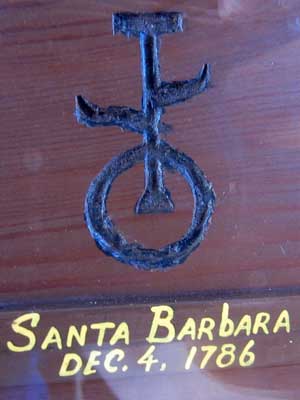

Mission Treasures exhibit...

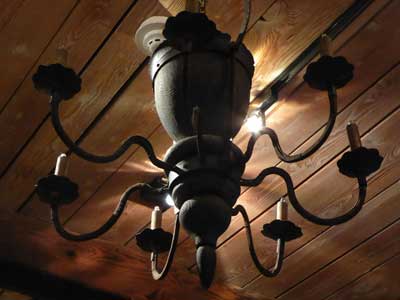
This is one of three chandeliers that lit the daily masses, weddings, baptisms and funerals in the Serra Chapel for over 80 years. They were the best electric chandeliers available back in the 1920s.


This chalice from 1930 is made of silver, gold, ivory and glass. ... This saddle was owned by Don Juan Forester (1814 - 1882) who purchased the mission in 1845 for a mere $710 and turned it into a ranch. A luxury saddle like this would have been worth 150 cow hides.
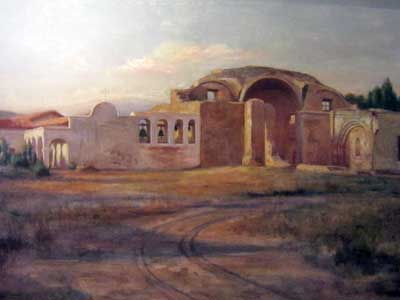

The mission around 1900

Father Junipero Serra

return • continue

